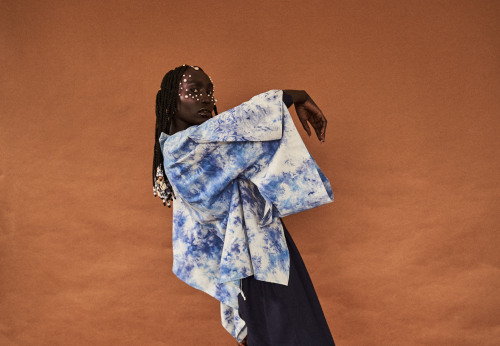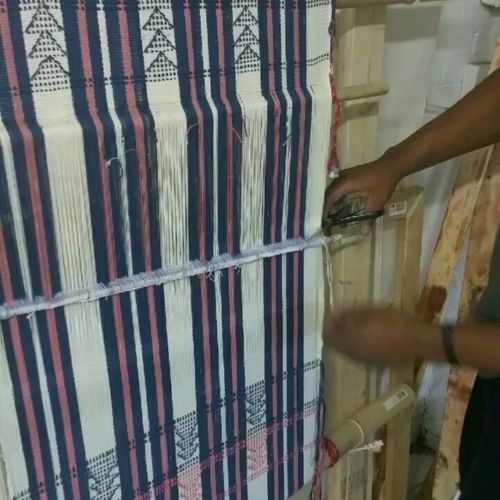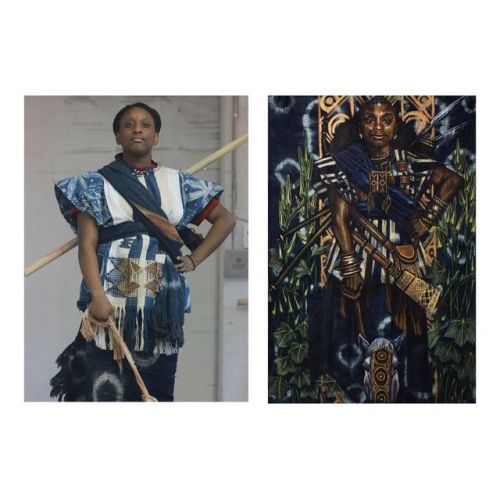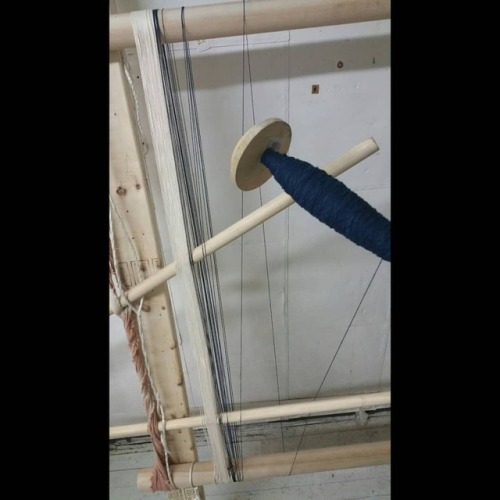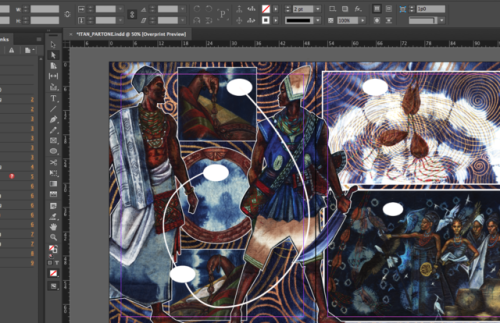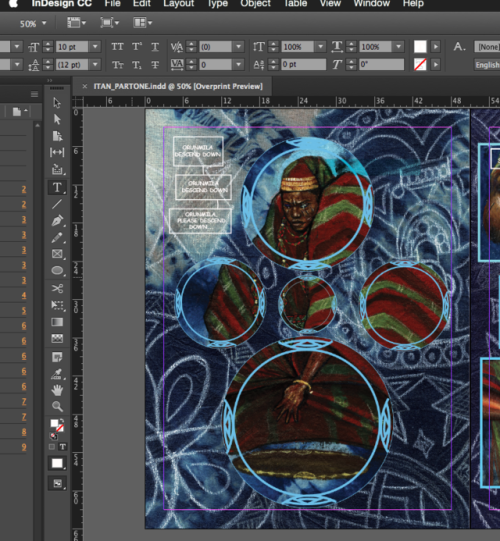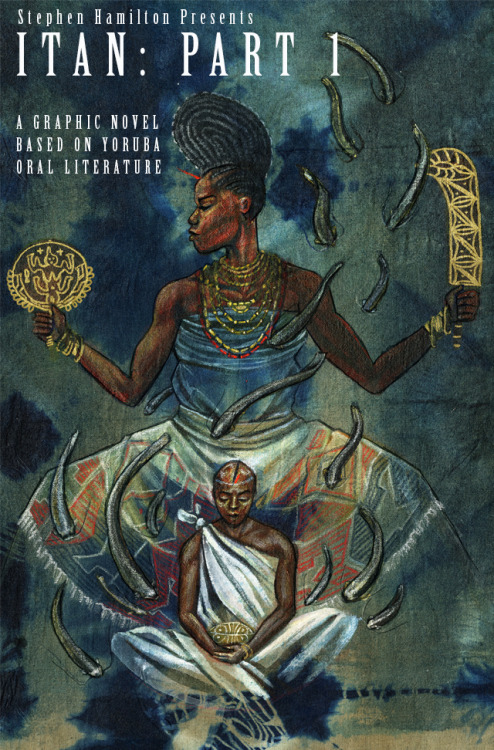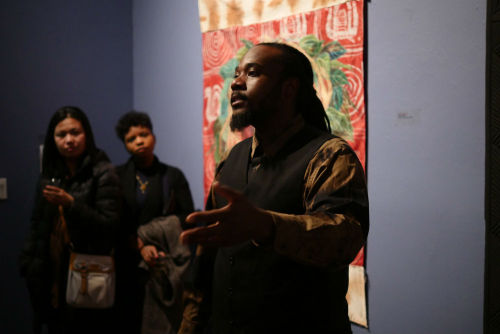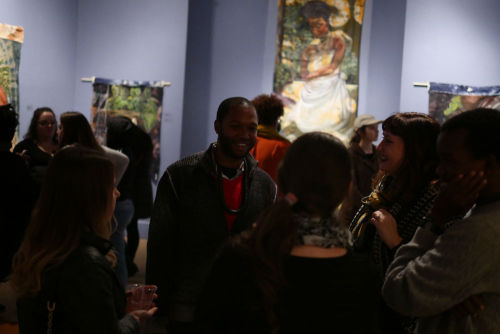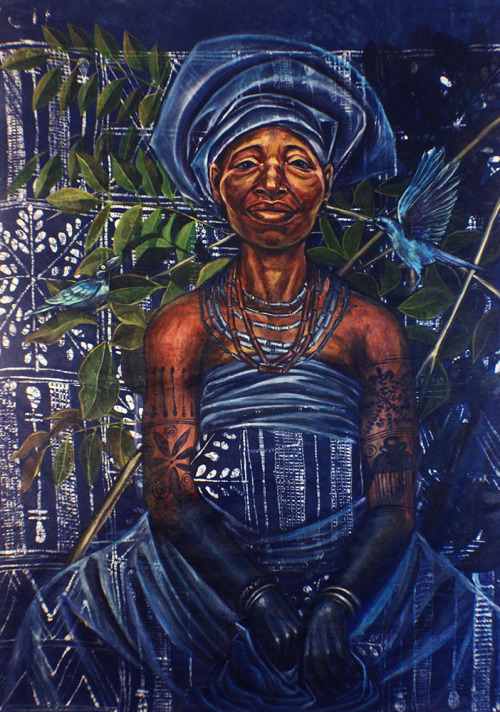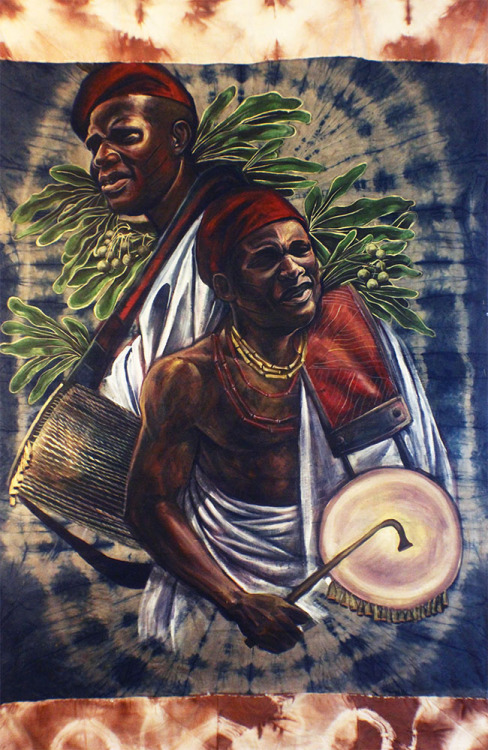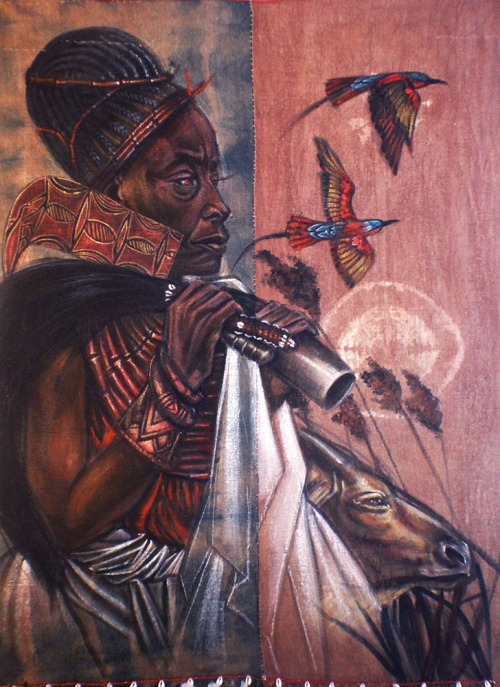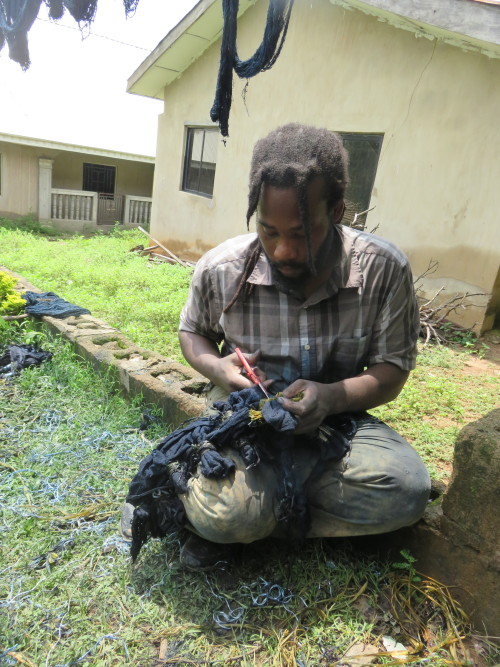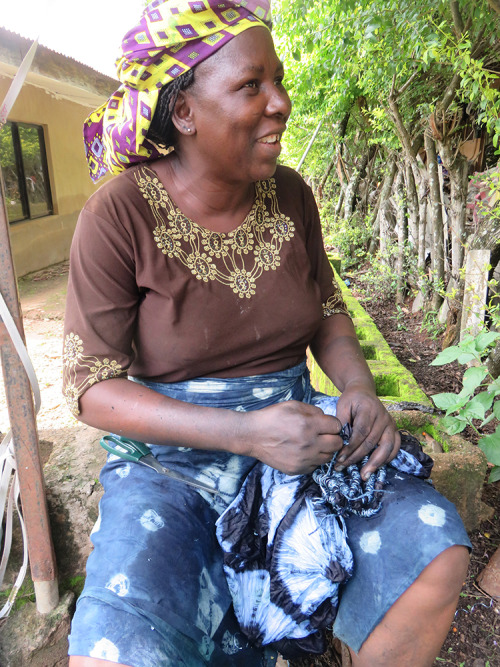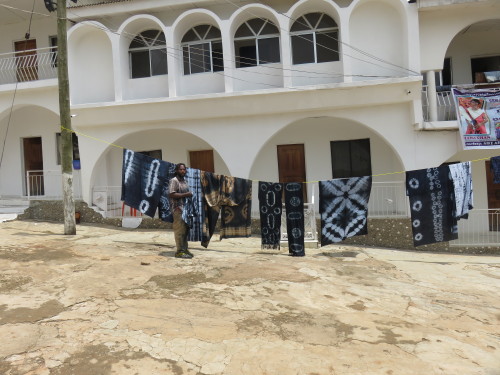#africantextiles
Finally finished! So much more to do but it is one step closer. Follow #thefoundersproject for more updates!
.
.
.
#thefoundersproject #weaversofinstagram #handwoven #handdyed #naturaldye #africantextiles #nigeriantextiles #akwammiri #asoofi #akwaigbo #textileart
Post link
“Yennenga, tree from which the Mossi people grew” Yennenga was the daughter of Madega the legendary 12th century ruler of the kingdom of Dagbon in what is now northern Ghana. A powerful warrior in her own right, Yennenga lead soldiers into battle at the age of only 14. Matchless with the bow and spear, she was a legendary horsewoman who won many battles in her father’s name. When she came of age and expressed the desire to marry, her father refused. In protest, she planted and entire crop of Okra and let it rot in the field to show how she felt her life was withering away and her time to start her own family was passing her by. Her father was unmoved, so she escaped her father’s compound disguised as a man. Upon leaving her father’s kingdom she met a young Malinke prince and elephant hunter named Riale. They fell in love and had a son Ouedraogo, who became the first Mogho Naba (king) of the Mossi empire. Though Ouedraogo was the their first king the Mossi credit Yennenga as the founder of their nation and the royal horseman of Mossiland, to this day still carry her legacy forward. Follow #thefoundersproject for more updates!
.
Photo by @stacehphotography .
#thefoundersproject #blackart #blackartist #supportblackart #theartofstephenhamilton #blackisbeautiful #painting #africanhistory #blackhistory #africantextiles #handwoven #indigo #adire #artoninstagram #drawingwhileblack #Yennenga #mossi #burkinafaso #ghana #Dagomba #portraiture #blackgirlmagic #representationmatters
Post link
“One who descended to earth on the Iron Chain” more work on #thefoundersproject coming soon!
.
.
.
#staytuned #painting #artistsoninstagram #drawingwhileblack #blackart #africanhistory #omooduduwa #yoruba #orisha #orisa #acrylicpainting #africantextiles #wip #staytuned
“Gianna Watson as Yennenga: Tree from which the Mossi nation grew” After months of preparation I am pleased to announce #thefoundersproject. The Founders Project is a multimedia installation project headed by Boston based artist and educator Stephen Hamilton. The project re-imagines Boston Public School High-School students as the legendary founders of the West and West-Central African ethnic groups, that are part of the ancestral base for the African diaspora. The pieces will incorporate painting, weaving and sculpture traditions from each of the spotlighted ethnic groups and is to be installed in a yet to be determined public space in Boston. The project will contribute to a larger syllabus on West African cultural continuity in the African Diaspora designed for High School students. Follow #thefoundersproject for more updates! #thefoundersproject #blackart #blackartist #supportblackart #theartofstephenhamilton #blackisbeautiful #painting #africanhistory #blackhistory #africantextiles #handwoven #indigo #adire #artoninstagram #drawingwhileblack #Yennenga #mossi #burkinafaso #ghana #Dagomba #portraiture #blackgirlmagic #representationmatters
Post link
Still have a long way to go but I have the first pattern block finished. The pattern is called fingernail and Yoruba and leopards claw in Igbo #asoofi #akwaigbo #nigeriantextiles #africantextiles #handwoven #handyedyarn #indigo #camwood #brocade #weaversofinstagram #moretocome #wip
Post link
Making some headway with the weaving .
.
.
#asoofi #akwaigbo #nigeriantextiles #africantextiles #handwoven #naturaldye #osun #camwood #indigo
The start of a long journey, gotta get lost in the process. Stay tuned there is so much coming this year! #asoofi #weaversofinstagram #handwoven #naturaldye #indigo #akwammiri #akwaigbo #nigeriantextiles #africantextiles #staytuned #workinprogress #blackart #blackartists
Post link
An Untold African Fashion Story

“You have to be lucky to find the right ones and then stick with them”.
All month of August so far I have shared and discussed with those in the AFG community about sourcing in Africa. I want to help you to learn insights into this so you can get started.
This quote above was something that my guest from this weeks youtube interview said and I think it’s extremely fitting for the reality of setting…
Here is a little insight into the composition process. Its a lot of work, but its worth it to see this project come to life. I still need help to print and distribute this work. Visit https://www.indiegogo.com/projects/itan-part-one-africa-art#/ to help bring this vision of traditional Yoruba Oral literature to life! Back the project to reserve a copy of the comic!
Post link
PLEASE READ
When thinking about why I decided to create this comic I remember an incident in High School. When I was in ninth grade we had an entire unit in Humanities class dedicated to learning about world religions. In what our school thought was an inclusive discussion on world faiths and their impact on society and world history, our class learned about multiple denominations of Christianity, Judaism, Islam, Buddhism, Hindusim and a host of other “Major Religions”. Not one African or African derived faith was included in our studies. We learned about how these faiths shaped the history and worldview of each of the societies in which they were practiced. They even invited practitioners of each of these faiths to the school to share their beliefs and experiences with us. I remember hating that assignment. I remember with my teenage indignation handing in every annotated bibliography a week late. I remember every sneer and side-eye I gave my teacher as she chastised me on the importance of the project. I remember confronting her about omitting African based faiths from her curriculum and her looking at me with her condescending white lady smile and selling me the same tired brand of bullshit I heard from well meaning white ladies my whole life “we need to focus on MAJOR religious traditions during this course” We wouldn’t be able to find any practitioner of African based faiths in Boston to speak meaningfully about their faith” This lady who taught mostly Black and/or Latino students (most of which were from the Caribbean) looked me dead in my mouth and told that boldfaced lie. In a unit that that focused on how religious philosophy shapes our perspectives, narratives and experiences she didn’t think it was important to at least try to expose us to even ONE of the myriad of African based faiths that had shaped the experiences of Afro-descended peoples throughout the diaspora. I’m making Itan: Part one for fifteen year old me. I’m making the book I needed read with the images I needed to see, because I know there are young people out there that need it too. I can’t fix a racially biased education systems singlehandedly, but with your help I can make this book. With your help I can expose people to a small portion of the infinite complexity that is Yoruba thought and aesthetics, one of the great traditions of the thousands of philosophical traditions of the African continent. If schools and media don’t want to tell our stories we can tell them ourselves! We can acknowledge and uplift them ourselves! We have the power to create, uplift and validate our own, history, and our own experiences. Support Itan: Part 1 Today visit https://www.indiegogo.com/projects/itan-part-one-africa-art/x/15991312#/. If you can’t donate then help spread the word. Thank You
Post link
I’d like to thank everyone who has donated so far, but there is still a long way to go! Visit https://www.indiegogo.com/projects/itan-part-one-africa-art/x/15991312#/ to support!. Support Itan: part 1 today and see how illustration, sculpture and textile arts can meet to tell powerful stories about Yoruba thought and aesthetics!
Support Itan: Part 1 Today!
https://www.indiegogo.com/projects/itan-part-one-africa-art/x/15991312#/
Hello Everyone! It has been a while but rest assured I have been steady working and awesome project that has been years in the making. Itan: Part 1 is a graphic novel that is based on the oral literature traditions of the Yoruba people of West Africa. The comic is heavily influenced by Yoruba art and aesthetics, combining traditional West african textile and sculpture traditions with western painting and illustration. Drawing directly from Ifa, the vast corpus of divination poetry used by the followers of the Yoruba Orisa traditions worldwide (as well as other Yoruba verbal arts) I am relaying important narratives rooted in African thought.
We are asking for 250 early adopters to preorder the comic which is set for completion in November 2017. A total of $5000 is needed to print and distribute a 500 copy run of the graphic novel.
visit “Here” to find out how to donate. Support Itan: Part 1 today!
Post link
I want to thank everyone for coming out to the opening reception for “Black Gods Live” It meant so much to be supported in such a amazing way by my community. I would also Like to send of a special thanks to the ACI artist cohort for all of their help and support. The work will be on display until January 27th so be sure to visit the The NCAAA at 300 Walnut Avenue in Boston, MA to check out the work! Also In other news MY ONLINE STORE HAS JUST LAUNCHED! Get a fine art print from my “Portraits of the Orisa” series just in time for the holiday season! Series is available in mounted and and unmounted 8"x12 formats. Check outhttp://www.itanproject.com/prints/ or inbox me to purchase via squarecash. Special thanks to QueenGidreaandStacehphotography for the photos!
Hello Everyone!
Post link
Hello Everyone!
It has been a long time coming , but my new site is ready to launch! I am pleased to present Itanproject.com featuring new works produced in Nigeria in collaboration with Arts Connect International and The Nike Center For Art and Culture. Thank you to all who have been following my journey! Check it out and stay tuned as I will be adding more content as my work and this particular project develops.
Post link
One of the benefits of living and working at the the Nike Centers For Art and Culture is that I get a chance to document her incredibly extensive textile collection. The collection includes Nigerian Textiles (mostly from the Yoruba kingdoms), Raffia cloths from the Kuba federation in the Democratic Republic of Congo. Malian “Bogolanfini” Mud cloths and even one beautiful example of of a Ghanaian Kente cloth. The Yoruba made textiles are by far the most extensive part of the collection and include cloths made on both the Women’s (vertical) and Men’s (horizontal, narrow strip) looms. The collection also includes a huge variety Adire (tie and dye and starch resist ) cloths executed on both handwoven and machine woven cloths. The woven textiles include antique textiles woven with hand spun cotton threads, dyed with natural dyes (Mostly indigo with some some camwood dyed warp sections). They also include “Sanyan” textiles woven with the once illustrious beige wild silk collected from the indigenous anaphe moth, as well as textiles woven with imported silks from Asia and synthetic and machine spun cotton, rayon and polyester threads from Europe, Asia and the Americas. There were Indigo robes, shirts, trousers, wrappers and hats. The textiles beauty is only surpassed by their diversity. The pieces are testaments to tradition as well as ingenuity and creativity. There are clothes that could have easily been worn in the ancient courts of Ile Ife and the Ogiso era Benin Kingdom and others that take ancient motifs and execute them with brilliant synthetic or metallic threads, sometimes sewn together with imported textiles to create beautiful and unique pieces speaking to the individuality of the weavers. I began to respect the creators not only as traditional craftsmen, but as contemporary textile artists, working from an African aesthetic tradition.
Below: Examples of textiles using hand spun, hand dyed silk (Sanyan) and cotton threads, as well as machine spun imported threads in imitation of natural dyed threads. The colors and patters used in the AsoOke (Narrow strip cloths) are similar to those created since at least the 16th century, While the striped indigo Women’s loom AsoOfi echo back to cloths made in southern Nigeria dating back the 9th century.

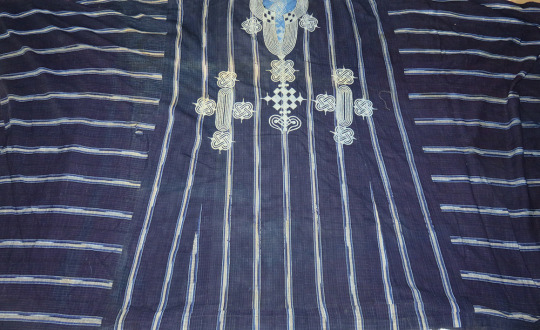

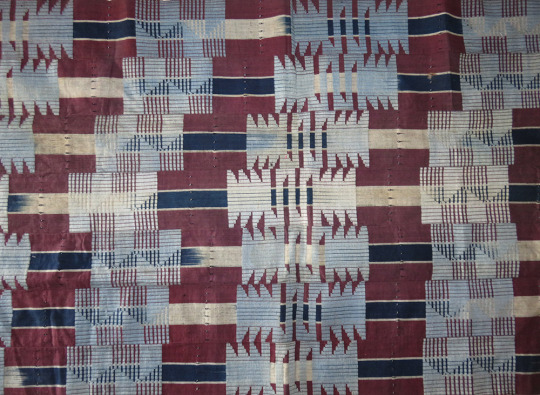

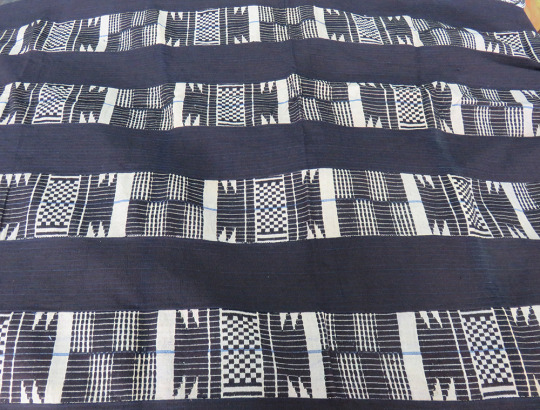

Below are examples of Adire textiles. The top two are representative of the Adire Eleko ( Cassava Starch Resist) techniques developed by Yoruba Women in the early 20th century. Below them are Examples of Adire Oniko (Tie and Dyed) on Kijipa (Hand woven cotton cloth using hand spun threads on a Women’s vertical loom). The textiles make use of the “Eleso/fruits” and “Osupa/moon” patterns. Textiles such as these were made as far back as the 11th century.
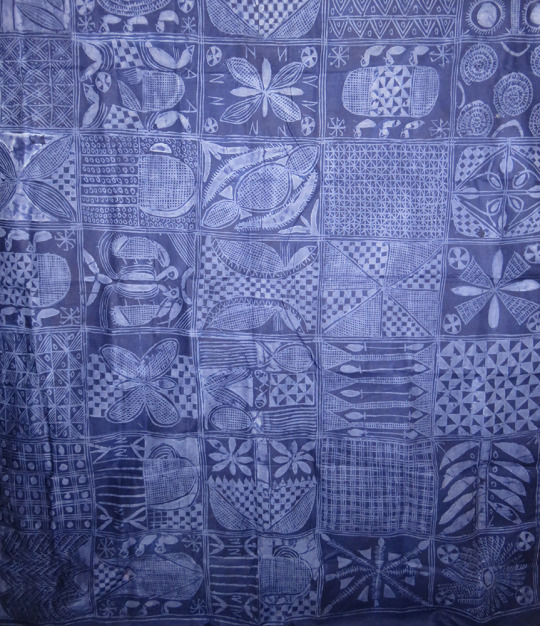


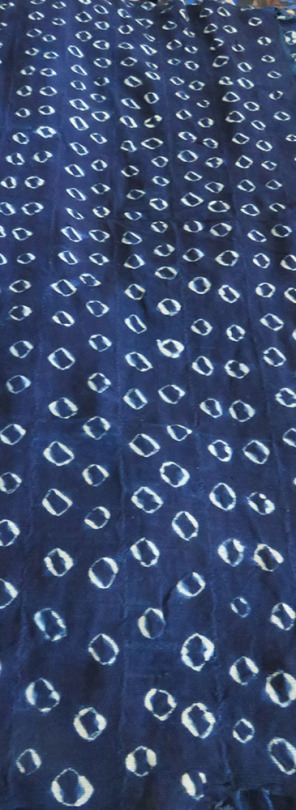

Below are some example of Chief Nike Okundaye’s extensive Raffia Textile collection.

A minimalist example of Malian Bogolanfini “Mudcloth”

A more contemporary handwoven Dashiki made using handwoven AsoOke “stripwoven” Fabric and machine embroidery. The basic style in format though is quite old.
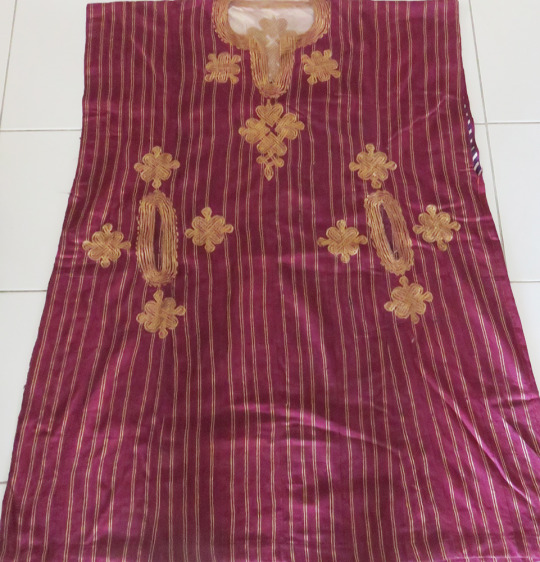
A unique cloth that incorporates machine woven Damask fabric with hand woven AsoOke, utilizing “Jawu/openwork” and metallic threads.

Being immersed in this tradition made me think about the perception African textiles in the Americas. For so many Dutch, Indian or Chinese made printed textiles have become synonymous with African cloths. These wax prints although an important part of contemporary African Identity often undercut the rich local handmade textile traditions of west and central Africa. The ancestral resist dyeing and weaving traditions that link Africa with diaspora often go unnoticed in favor of the printed textiles, as do important avenues of mutual exchange and economic development of African creative markets. The “invasion” of these foreign textiles is so absolute that they have almost completely replaced the once vibrant raffia weaving tradition of central Africa, which at one time was producing tens thousands of yards of domestic and luxury textiles. These “Wax Print” textiles were originally created by the Dutch to sell in Indonesian markets were often made to specifically imitate the Batik patterns and motifs of southeast Asia. When it was discovered that these cloths sold far better in African markets they began exporting them across the continent. Although these early 20th century Africans loved these brightly colored “new "textiles, their patterns and colorways held little to no significance to the preexisting textile traditions and at least in West African indigenous weaving and resist dyeing traditions continued to flourish and evolve alongside these newer imports. For us in the Diaspora it important to understand that our ancestors would not be able to recognize brightly colored machine made textiles that we associate with Africa now. What we call a dashiki is vastly different from the ones they wore, but also very similar to those made in West Africa today by West African weavers and tailors, who maintain these vibrant traditions. The technicolor floral and kaleidoscope patterns that dominate printed textiles would have also been alien to them, but the tie and dyed patterns that are still made and used in Nigeria, Mali and Liberia would have been strikingly familiar, as they not only predate the transatlantic slave trade, but may have been practiced by the descendants of African slaves in the Americas up until the 19th century.
Below: Pre 20th century robes: Top: Kanuri robe from the mid 19th century embroidery on imported silk. Second: Mande robe from the 17th century indigo dyed robe with tie dyed “eleso” pattern. Third: mid 19th century embroidered Dahomean robe from what is now the Republic of Benin, Strip woven fabric with embroidery. Fourth: 17th century strip woven tunic most likely from a Mande speaking region.




The indigenous textile traditions of Africa are rich and varied, and represent both continuity and change. As we in the diaspora begin to explore African textiles it is important that we understand the roots of these traditions and the fascinating ways in which these aesthetics and traditions relate to our own textile and aesthetic traditions and how we can economically support this incredible work made by black artisans.
My Time in Ogidi-Ijumu came to an end yesterday. With the indigo pit finally ready I was able to dye the threads and the textiles I was preparing over the previous weeks. For so many people Nigerian (and by extension all west african) textiles bring to mind wax print ankara cloth, but for me and the other artisans at the Nike Art Center in Ogidi the ancient arts of Adire Oniko Adire Eleko, Aso-ofi and Aso-oke are at the core of the long and rich tradition of adornment. I would like to thank Mrs. Agnes Umeche for being such a patient and fantastic teacher I cant wait to share what you have taught me with students in the U.S.A!
Post link


